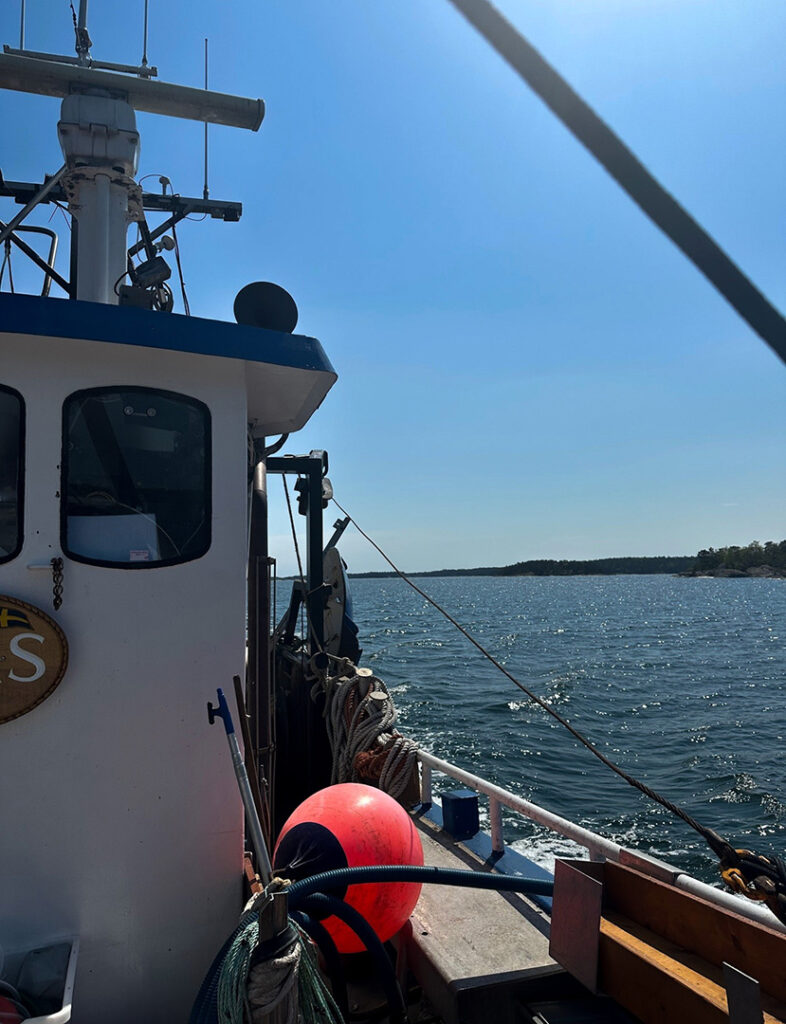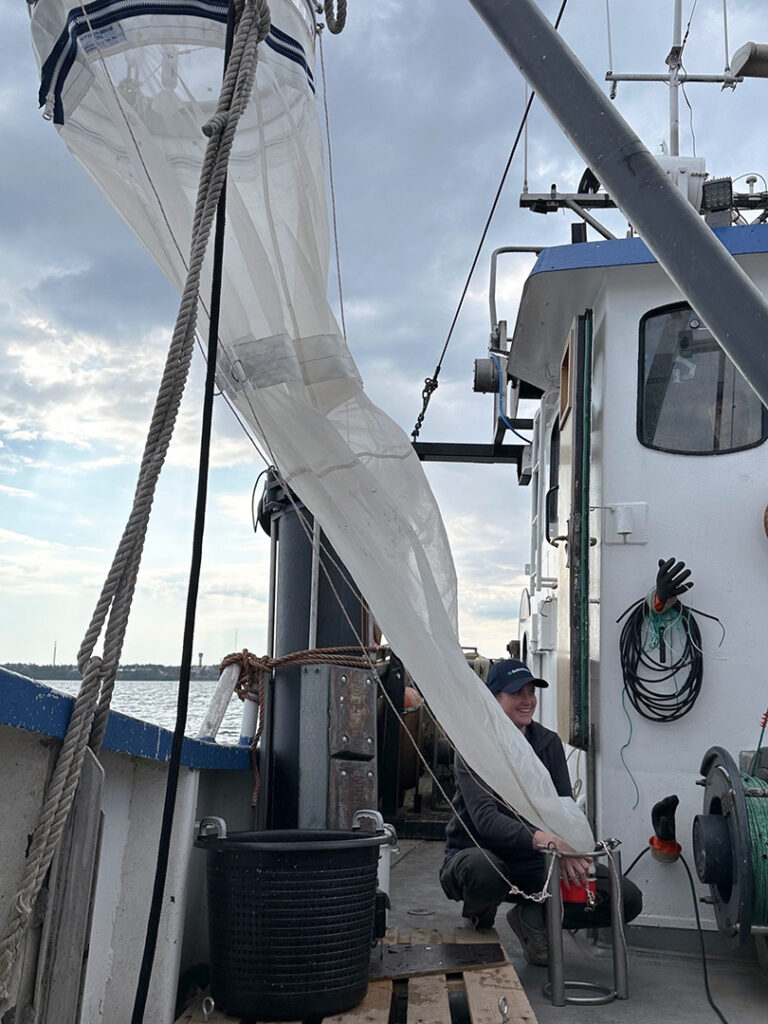Johanna Fröjd, project manager for ReCod – release of small cod in the Baltic Sea, rolls into the Källvikhamn car park mid-day. In the fridge inside the lorry is a valuable cargo – almost 50,000 small cod larvae. They have been travelling since early this morning, all the way from the research station Ar on Gotland where the cod larvae are hatched. And now it is time for the 5-day-old larvae to take on life in the Baltic Sea.
The water sparkles as we head out with the boat towards the release site in Tvären Bay. It may be lovely for us, but for the little cod larvae, the sun and the heat are anything but optimal. But Johanna comes well prepared. The larvae have travelled in coolers to maintain a water temperature of between 6-8 degrees and once on the boat we keep an eye on oxygen levels and temperature while the larvae are kept dark under sun-reflective blankets.
Once at the release site, Johanna takes samples in the water column to find out the temperature, oxygen content and salinity. Then we start carefully transferring the cod larvae to the release unit. When the release unit is full, it is sealed and taken down to a depth of about 30 meters. This is because oxygen, salinity and temperature are optimal for the small larvae here. After a few hours, all 50,000 cod larvae are released. A seal peers curiously up over the surface and is probably wondering what we are doing.


Johanna with CTD next to the release unit.
Short film on how the release is done.

Johanna with the plankton net.

Plankton samples.
Once the releases are complete, it’s time for plankton sampling. This is done using a long, very fine-meshed net that is carefully pulled through the water column – from the bottom to the surface. Johanna will take the samples back to the research station to be analyzed, but at first glance they appear to be packed with plankton. That’s a good sign because it means there’s food for the tiny larvae to eat.
As we head back towards the harbor in the evening, it’s hard not to feel hopeful. The development of Baltic cod has looked bleak, to say the least, in recent years. But perhaps some of the cod larvae will survive and grow into large cod. This would mean that it is possible to get the cod back. If we take care and manage the sea with the caution it deserves.
Photo of cod larvae: Johanna Fröjd, BalticWaters
Other photos and video: Madeleine Kullenbo, BalticWaters

About ReCod
The project is carried out at the research station Ar on Gotland – in the middle of the Baltic Sea. The goal of ReCod is to conduct experiments with the release of 4–6-day-old cod larvae at several locations along the east coast to investigate whether the larvae survive and successfully establish themselves. If the experiments are successful, there is the possibility of reintroducing cod in the Baltic Sea at more locations, thereby increasing the chances of preserving and protecting the unique eastern stock. ReCod is implemented and financed by BalticWaters and Uppsala University.
Would you like to know more? Visit the project’s website.

